The Speed Solver
Junior Phillip Lewicki boasts international ranks for his strikingly swift Rubick’s Cube skills
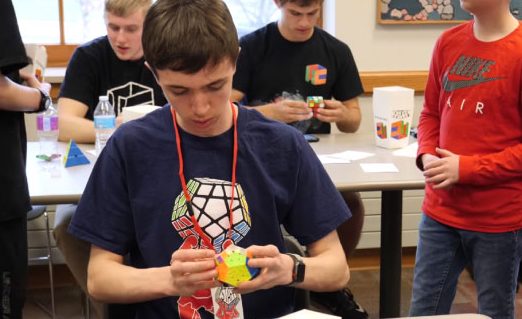
Lewicki solves a megaminx puzzle at a Shaker Heights cubing competition. “I practice all day at every possible moment,” Phillip said. “I want to break the world record in at least one event. I want to be competing for world championship podiums for my main events.”
“Phillip!” a cube runner calls. A young man sits down at his station. In front of him a cover, shaped like a Chinese takeout box, is removed revealing a scrambled Rubik’s Cube. He picks it up, turning it side to side, examining each piece of the complex puzzle. Without taking his eyes off the cube, he sets his hands down onto the speedstack.
Ready to solve.
Junior Phillip Lewicki can solve a Rubik’s Cube in less than seven seconds. On the World Cube Association, Phillip is ranked thirty-ninth in the world for his average solving time for a Rubik’s Cube — 7.46 seconds.
Phillip first learned how to solve a Rubik’s Cube from a DVD when he was 8 years old . “It took me two weeks. I was banging my head against the wall. I would throw the cube against the wall in frustration,” Phillip said.
But his interest in speedcubing only took off from there. Phillip’s dad, Mike Lewicki, wrote in an email, “When he finally solved it, he had a look of utter amazement on his face that I’ll never forget. It wasn’t long before he could repeat the entire DVD from memory. He even made his own version of it.”
Speedcubing means solving a twisty puzzle such as the Rubik’s Cube as fast as possible. Ruwix, the Rubik’s Cube Wiki said, “Three-dimensional twisty puzzles are made of pieces that can change their position through a series of operations.” Other popular twisty puzzles include the 4×4, 5×5, 6×6, Megaminx and Pyraminx.
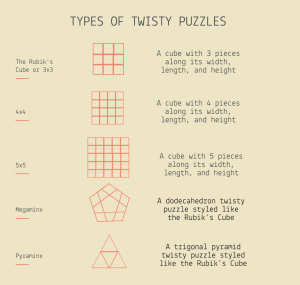
Lewicki competes using different puzzles, and not all of them are cubes.
When a twisty puzzle is solved, each side of the puzzle is one uniform color.
Phillip went to his first cube competition in 2012. But getting there wasn’t easy. “The only competition I could find in the second half of the year was this competition in Indianapolis,” said Phillip. “It was six and a half hours away.”
At a cube competition, cubers attempt to solve their twisty puzzles, from Rubik’s Cubes to Megamix, as fast as they can.
Phillip’s father was less than enthusiastic. “My dad was like, ‘I’m not going to drive you six and a half hours to go to a Rubik’s cube competition,’” Phillip said, laughing. “But then he told me that if I got a sub-20 average at home that he would take me,” said Phillip. “So then I practiced a lot and I got under 20 seconds and then we went.”
Phillip recalled feeling accepted by the cubing community. “It was a very welcoming community and I remember being very impressed,” he said.
For Phillip, the cubing community is a strong motivator to continue cubing. “People are very nice. In the early days I spent a lot of time racing against other cubers during competitions. Almost everyone I’ve met has been wonderful and passionate about cubes,” said Phillip. “Cubing just has great people.”
“I’ve always liked cubing, the practicing, but the people just inspire me to keep continuing,” said Phillip. “I know a lot of cubers who are not as into it as I am, and they’re a bit older, and they’ve been doing it a lot longer, and they say one of the only reasons they keep doing it is because they’ve made really good friends.”
Daniel Pitas, Phillip’s friend, said Phillip is diligent. “He cubes all the time. He cubes every day,” he said.
“I practice all day at every possible moment,” said Phillip, whose motivation to improve keeps him inspired. “I want to break the world record in at least one event. I want to be competing for world championship podiums for my main events.”
Phillip credits his success in speedcubing to his dad. “Without my dad’s support, I don’t think I’d be as fast. I would not be having as much fun or trying as many new practice techniques,” Phillip wrote in an email. “He brings me to all of my competitions and supports me through everything.”
The best moments for a cuber are when they get a PB, personal best. Phillip said his most memorable moments are PBs and recalled the first time he got a sub-10 second solve. “I was solving in the dining room home alone, and I remember I was doing some solves, and I just randomly did a really good solve, and it was sub 10!”
“I was hyped. I jumped up and ran around the house.”
Aside from cubing, Phillip also plays chess. “Cubing can get boring if I sit there four hours a day and cube all the time. So it’s nice to have something that I can do that’s a different type of stimulation.”
Phillip also runs the high school’s Rubiks and Puzzle Club, which he started during his freshman year.

Junior Daniel Pitas and junior Daniel Szoke discuss plans for the Shaker Spring 2018 cubing competition.
Meeting attendance often varies from three to 20 people, but when enough people come, a culture awakens. In one meeting, about 15 students sat atop desks, chatting as they simultaneously solved their cubes. Laughter, accompanied by the clacking sound of turning mechanisms, filled Room 201.
“It’s mostly just friends here. It’s just a bunch of people who like to solve the Rubik’s Cube,” said junior Daniel Pitas, Phillip’s friend. “You know, a community feel.”
Senior Jocelyn Ting said, “I enjoy that there are people of all levels, so there are people who never even touched a Rubik’s Cube, and then there are people like me, on the intermediate level.”
Ting said Phillip’s mastery of the cube is a key part of the club. “That’s what makes this club special; we have a world-class cuber,” she said.
At the meeting, a sophomore struggling to solve his cube asks Phillip for help. Phillip picks up the cube and makes a series of moves with lightning speed, solving the cube. Phillip then explains to the sophomore what he did, slowly turning the cube this time.
Within the next few minutes the sophomore solves the cube himself. With a grin on his face, he scrambles it again.
“[Phillip] is willing to sit down, teach them, repeat his words, show them again and again,” said math teacher Michael Kabay, the adviser of cube club. “He’s still been trying to teach me, and I’m still stubborn not learning,” said Kabay, “but he keeps trying, even if you’re a slow learner.”
Ting said she persuaded Phillip to teach her how to solve the cube during a band activity. “But he only taught me the first two steps. I then aggressively texted him, so then he sent me this picture of steps of how to do that whole thing — that he had handwritten. It was better than a sheet that you get with the cube.”
“When I teach people, I feel like I gain a better understanding myself,” said Phillip.“So if I have to explain something, then I have to explain it to myself first.”
Phillip said, “There’s this need to give back.When you’ve accomplished something, you just want to give it to other people to accomplish it.”
The most popular method of solving the Rubik’s Cube is the Fridrich method or CFOP. The method was developed by Jessica Fridrich. The method consists of solving the cube layer by layer. CFOP is an acronym for the steps to solve the cube, Cross, F2L(First 2 Layers), OLL(Only Last Layer), and PLL (Permute Last Layer).
Phillip also organizes cube competitions bi-annually at the school cafeteria.
At first Phillip found preparing the first cube competition was challenging. “The first one was difficult, because I had to find a delegate, figure out how to request permission to use the venue and set up a website, not to mention actually scheduling and organizing the events, organizing the food, and cutting the scorecards,” Phillip wrote in an email.
Now with more experience, Phillip enjoys the competitions even more. “Fortunately, the process has become much easier, and it’s even more rewarding,” Phillip said.
His most recent cube competition, Shaker Spring 2018, is similar to cube club, only bigger and more welcoming. One hundred and seventeen competitors attended. People drive 30 minutes or three hours to get there. Cubers who’ve never met talk to each other as old friends might, trading tips on how to get faster solves.
Kabay said, “Phillip does all the behind the scenes work.”
The WCA delegate at the competition, Zachary Garber said he loves that the cubig community does not divide itself. “No one is segregated by race, gender, ethnicity,” he said. All official competitions require a WCA delegate present to ensure the cubers follow WCA guidelines.
Phillip also finds his cube competitions satisfying because they’re more personalized. “It’s also fun for me because I get to wake up, drive a few minutes, and compete in all of my favorite events,” Phillip said. Events at the competition included 3×3, 4×4, Pyraminx, and Megaminx.
Phillip’s favorite part of the competition is the 3×3 head-to-head finals. Head-to-head finals are when cubers ranked in consecutive places sit at a table side-by-side. The cubers take turns doing solves.
Everyone is silent and tense as they prepare to watch solves under 10 seconds.
Phillip feels pressure during a cube competition.“You just have a lot of people watching you feel like you have to do well,” he said.
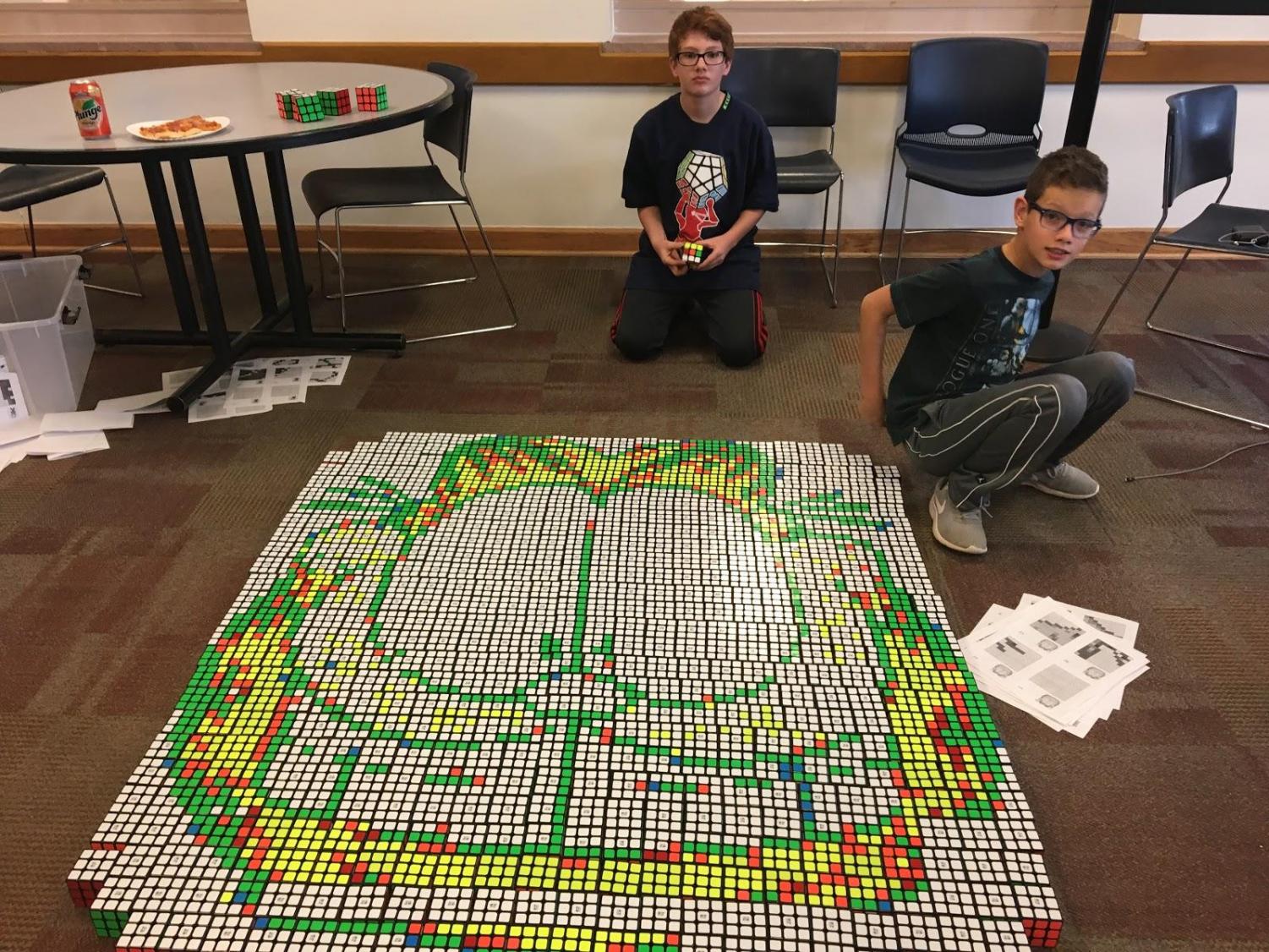
A cube mosaic of Garfield completed at the Shaker Spring Cube Competition is made out of 588 Rubik’s Cubes.
Phillip also posts videos about cubing on his YouTube Channel, LaZer0MonKey. The content of his channel varies from breakdowns, or explanations, of solves to reviews of different puzzle brands and his experiences at cube competitions. He made a video of the Shaker Spring 2018 cube competition.
One of Phillip’s most important videos covered the Cubing Nationals in 2014. “I think where the purpose of my channel really changed and was when I went to my first nationals in 2014 and I wanted to make a video about it,” Phillip said.
He made the video to show how cool cubing was. “I was like, ‘Man, there are all these cool videos for other things but cubing. There’s nothing showing how great the community is and how happy everybody is and how people are sharing and laughing.” Phillip’s video of the 2014 Cubing Nationals Phillip now has more than 90,000 views.
“It’s nice to have a cool video in the end because I can share this video with hundreds of thousands of people,” he said. LaZer0MonKey has more than 24,000 subscribers.
Phillip said he relishes the process of making videos. “I’m really into camera gear and I really like editing. If I can create really cool content to use my cool camera gear on and edit, then I’m happy,” he said.
Phillip also helps people with their own videos. “I was doing a German project, and for it Phillip agreed to film the entire thing and edit. He gets no credit in this. He doesn’t take German,” said Pitas.
“They bring me enjoyment,” said Phillip. “It gives me something to do with my friends, it’s fun — and it gives me good street cred.”
Andy Denney, a friend of Phillip’s, said people can learn from Phillip’s “ambition to take something that he loves and work really hard at it, and create an environment where other people can enjoy it.”

This profile of Rubik’s Cube extraordinaire Phillip Lewicki, written by freshman Journalism II reporter Ashley Sah, is part of the profile series we call Shaker Stories. In a novel activity, 42 Journalism II students — two juniors, one sophomore and 39 freshmen — devoted the third quarter to researching, reporting, drafting, editing and revising profiles of Shaker students, teachers, coaches, residents and alumni. Shakerite editors and Journalism II students suggested people they considered noteworthy. Journalism II students chose their subjects and invited them to participate.
Subjects who accepted agreed to at least three, 20-minute interviews, suggested other sources to be interviewed, submitted photos — and endured dozens of follow-up questions. Journalism II students completed research as necessary to portray their subjects’ subcultures, whether Irish dancing, competitive cube solving or editorial cartooning.
Over the next six weeks, The Shakerite will publish the products of this unprecedented effort. We invite you to read, enjoy and share these profiles widely. We thank everyone who cooperated with this enormous effort. We also encourage you to suggest more people whose Shaker stories we should know.
Comment using your Facebook, Yahoo, AOL or Hotmail account



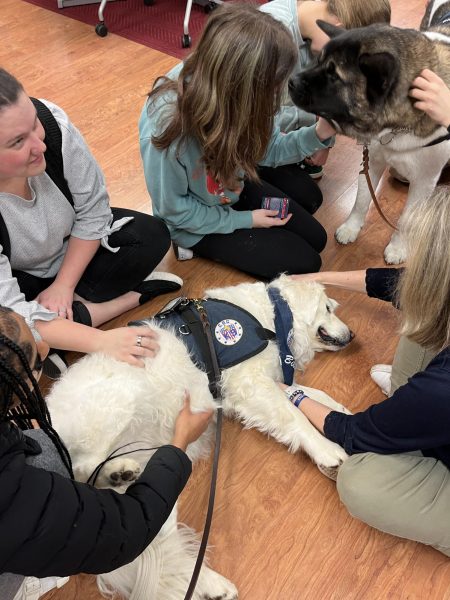


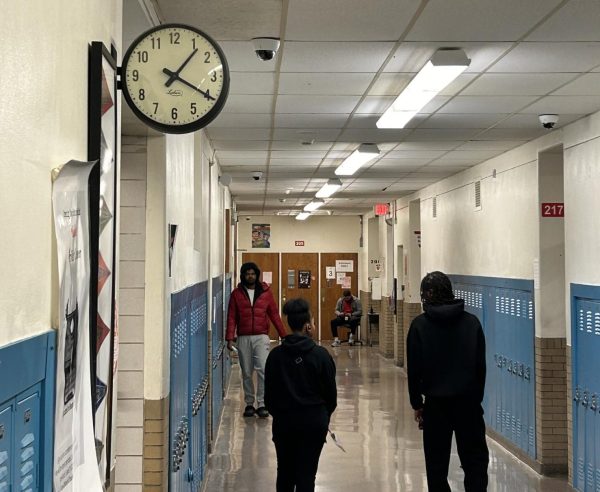




Jean Reinhold | May 25, 2018 at 8:25 pm
Fascinating! I’m so impressed by Phillip and thankful for this article, Ashley. Best wishes for getting more PBs and moving up in the rankings.